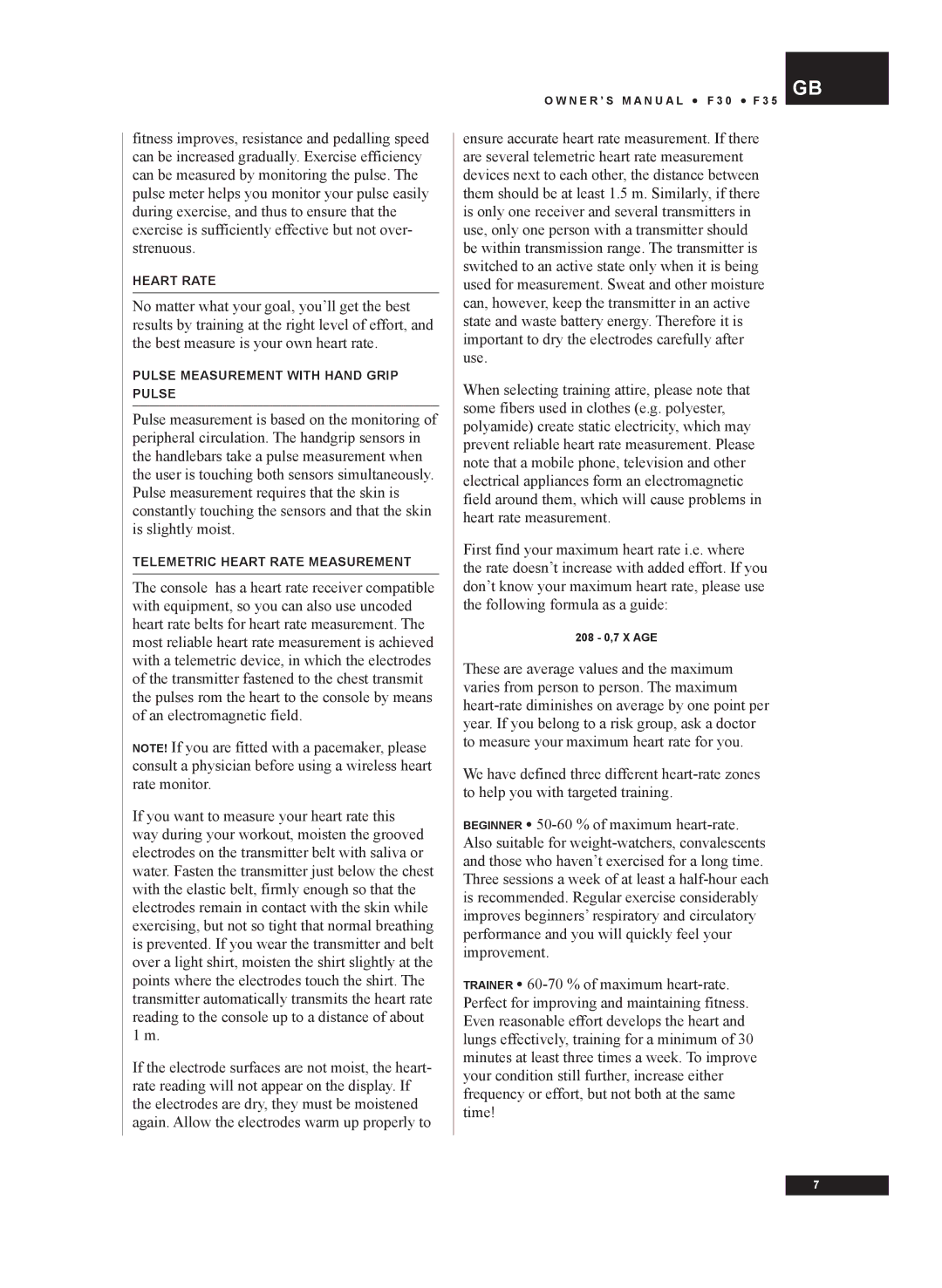
fitness improves, resistance and pedalling speed can be increased gradually. Exercise efficiency can be measured by monitoring the pulse. The pulse meter helps you monitor your pulse easily during exercise, and thus to ensure that the exercise is sufficiently effective but not over- strenuous.
HEART RATE
No matter what your goal, you’ll get the best results by training at the right level of effort, and the best measure is your own heart rate.
PULSE MEASUREMENT WITH HAND GRIP PULSE
Pulse measurement is based on the monitoring of peripheral circulation. The handgrip sensors in the handlebars take a pulse measurement when the user is touching both sensors simultaneously. Pulse measurement requires that the skin is constantly touching the sensors and that the skin is slightly moist.
TELEMETRIC HEART RATE MEASUREMENT
The console has a heart rate receiver compatible with equipment, so you can also use uncoded heart rate belts for heart rate measurement. The most reliable heart rate measurement is achieved with a telemetric device, in which the electrodes of the transmitter fastened to the chest transmit the pulses rom the heart to the console by means of an electromagnetic field.
NOTE! If you are fitted with a pacemaker, please consult a physician before using a wireless heart rate monitor.
If you want to measure your heart rate this way during your workout, moisten the grooved electrodes on the transmitter belt with saliva or water. Fasten the transmitter just below the chest with the elastic belt, firmly enough so that the electrodes remain in contact with the skin while exercising, but not so tight that normal breathing is prevented. If you wear the transmitter and belt over a light shirt, moisten the shirt slightly at the points where the electrodes touch the shirt. The transmitter automatically transmits the heart rate reading to the console up to a distance of about 1 m.
If the electrode surfaces are not moist, the heart- rate reading will not appear on the display. If the electrodes are dry, they must be moistened again. Allow the electrodes warm up properly to
O W N E R ’ S M A N U A L • F 3 0 • F 3 5
ensure accurate heart rate measurement. If there are several telemetric heart rate measurement devices next to each other, the distance between them should be at least 1.5 m. Similarly, if there is only one receiver and several transmitters in use, only one person with a transmitter should be within transmission range. The transmitter is switched to an active state only when it is being used for measurement. Sweat and other moisture can, however, keep the transmitter in an active state and waste battery energy. Therefore it is important to dry the electrodes carefully after use.
When selecting training attire, please note that some fibers used in clothes (e.g. polyester, polyamide) create static electricity, which may prevent reliable heart rate measurement. Please note that a mobile phone, television and other electrical appliances form an electromagnetic field around them, which will cause problems in heart rate measurement.
First find your maximum heart rate i.e. where the rate doesn’t increase with added effort. If you don’t know your maximum heart rate, please use the following formula as a guide:
208 - 0,7 X AGE
These are average values and the maximum varies from person to person. The maximum
We have defined three different
BEGINNER •
TRAINER •
GB
7
